Is goat meat good for you and what are the differences between mutton, lamb and goat meat.
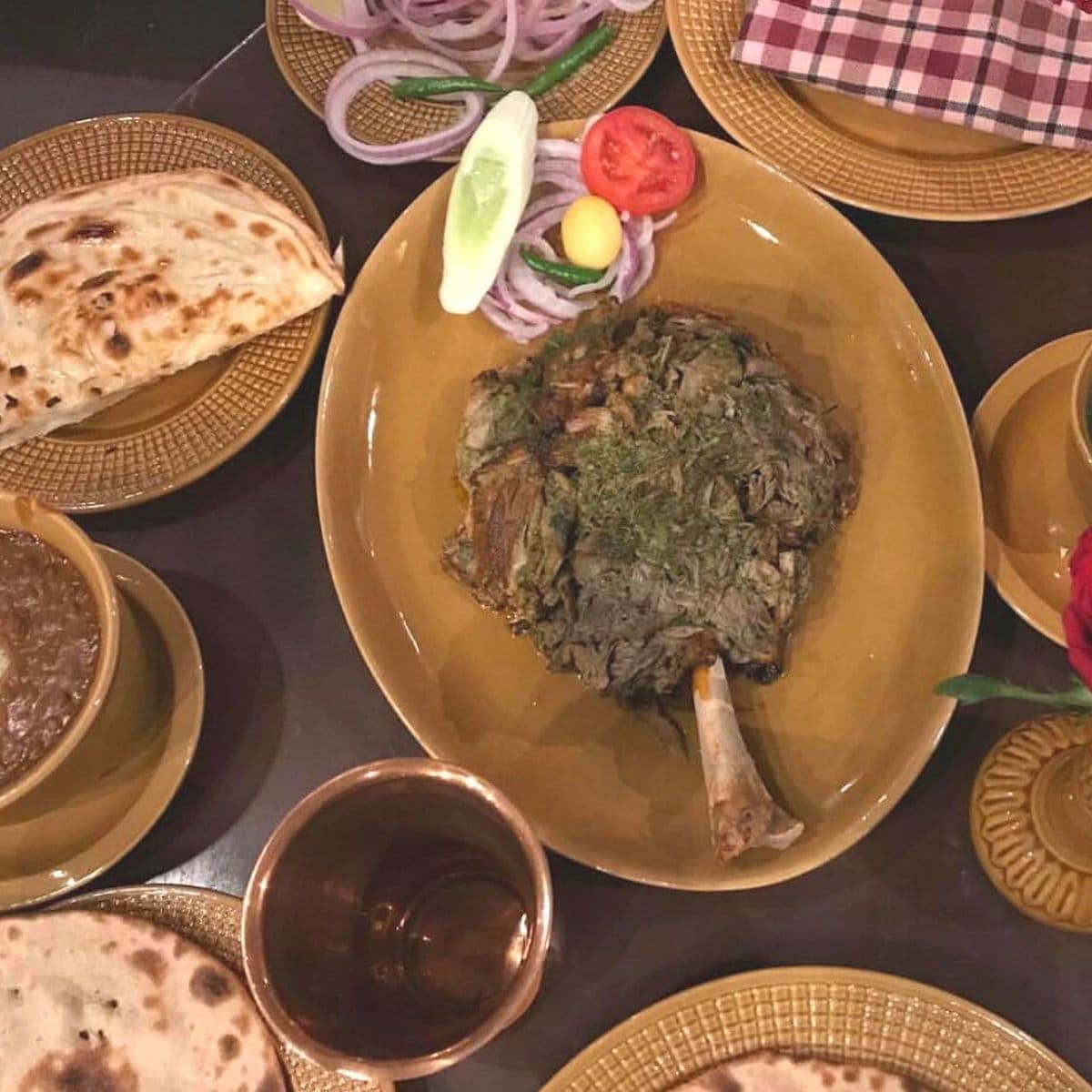
This post has been updated with a clearer comparison table (see below).
Goat meat is widely consumed throughout the world, but just how healthy is it?
To find out how healthy goat meat is we need to compare it with other popular meats on the market: mutton, lamb, beef and chicken.
We will look at the differences between them in terms of flavour, preparation, and their varying nutritional values.
Jump to:
- Goat Meat
- Goat meat around the world
- Varieties of goat meat
- 5 reasons goat meat is healthier
- How to cook goat meat
- Lamb meat
- Varieties of lamb meat
- How to cook lamb meat
- Mutton meat
- Varieties of mutton
- How to cook mutton
- Red meat recipes to try
- How to store red meat
- Comparison chart of cooked meats
- Related posts
- Reviews
Goat Meat
Goat meat is enjoyed by many throughout the world from Asia to Africa, South America, parts of Europe, and is increasing in popularity in the UK and America.
It is a red meat with a fine-grained flesh and ranges in colour from light pink to bright red. The tender cuts have a sweet but only slightly gamey flavour.
Goat meat around the world
Goat meat is something of a delicacy in France, Italy and Spain, and it is also very popular in the Central and South Americas where it is usually slow roasted.
In Asia, Africa and the Caribbean it is often prepared in the form of stews or curries.
In India so-called ‘mutton’ dishes are usually made with goat meat.
In fact, many South Asian countries, prefer using goat meat over lamb as it is leaner and tastes less gamey.
In the UK, goats are mainly bred for their milk so their meat is not commonly sold in supermarkets, but can be found in specialist butcher shops or some farmers markets.
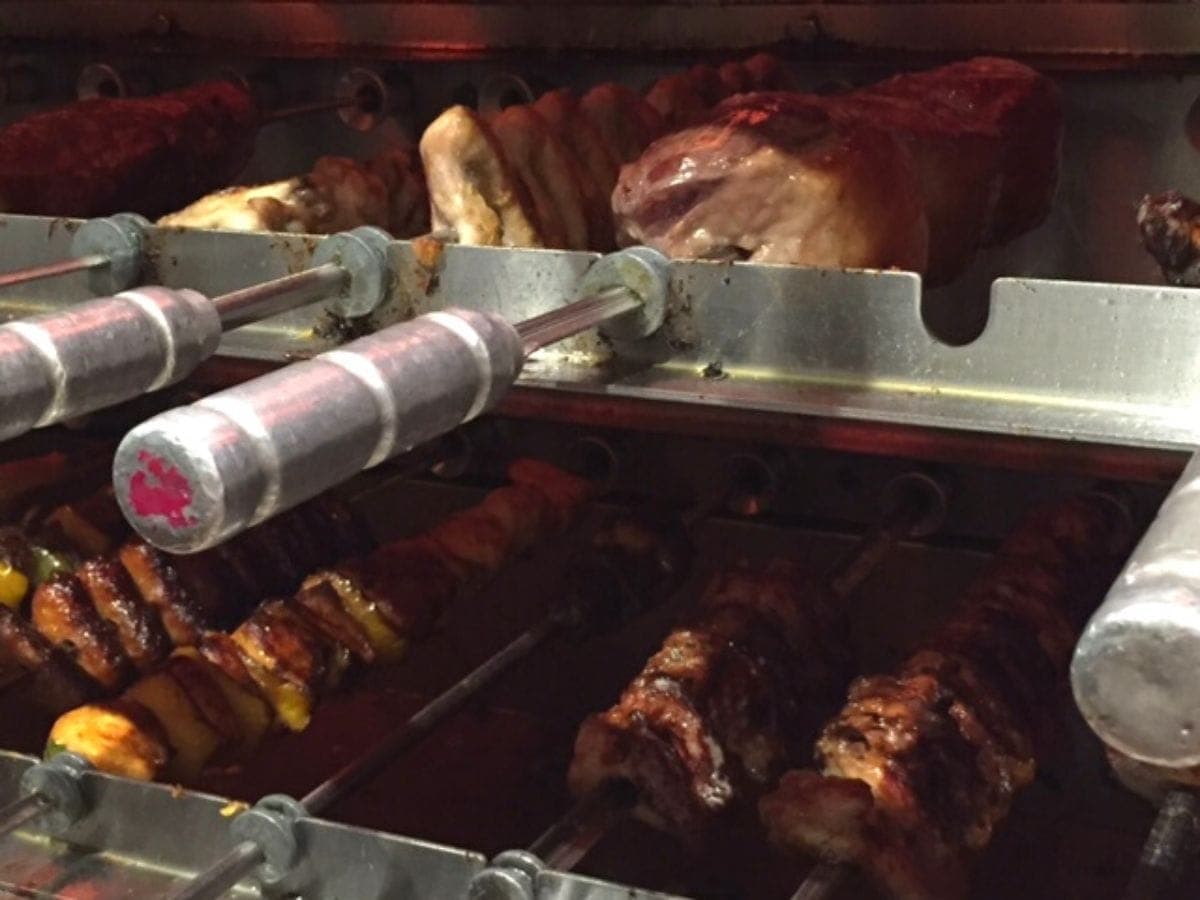
Varieties of goat meat
Goats bred for their meat are usually castrated when they are around six to nine months old.
After castration they are known as wethers. Most are slaughtered when they are under a year for a tender, juicy meat with delicate flavour.
Meat from an un-castrated goat tends to be tougher with a rather strong ‘goaty’ smell and flavour.
5 reasons goat meat is healthier
Goat meat is:
- low in calories
- low in saturated fats
- low amounts of cholesterol
- high in iron
- free from growth hormones
Goat meat is lower in calories, saturated fats, and cholesterol than beef, pork, lamb and chicken.
It also contains a higher amount of iron than beef, lamb and pork (see comparison chart below).
While some antibiotics might be present in goat meat, hormones are not approved for growth promotion in young goats.
These facts shows that goat meat is indeed a leaner and healthier option compared to equal servings of chicken, lamb, beef or pork.
How to cook goat meat
Goat is a surprisingly lean meat with little fat or marbling, so high temperatures will make it tough.
Less tender cuts are better suited to long, covered, slow cooking or roasting over low temperatures with a small amount of liquid, to preserve the moisture and break down the collagen in the meat.
The tender cuts from kid meat can be used in place of lamb in recipes. They are also suitable for marinating or tenderizing before grilling or barbecuing.
Lamb meat
Most sheep meat sold in the UK and US is lamb, because mutton is not as popular.
Varieties of lamb meat
A sheep in its first year is a lamb. Fresh lamb meat varies in colour from light pink to a pale red. Generally the darker the shade of pink, the older the animal.
Spring lambs, are milk-fed lambs. They are born in the winter and sold in Spring (around Easter).
Baby lamb meat will be pale pink, while regular lamb is a darker pinkish-red. The flavour and texture of this lamb is the mildest and most tender therefore fetching higher prices than that of cuts of older lamb or mutton.
How to cook lamb meat
Lamb is more fatty than goat meat and the fat tastes more gamey than the meat so if you are not keen on the flavour, trim off as much fat as you can and drain away the excess while cooking.
Some cuts of lamb have more marbling than others. One of the fattiest cuts is the shoulder which makes it ideal for slow-roasting.
Lamb is best seared at high temperatures and then slow-cooked, or grilled/braised, barbecued or roasted.
Lamb chops are a comparatively expensive cut as they are sold by weight and a large percentage of that is the bone and some fat. They are best suited to barbecuing or grilling on a high heat till they turn brown on the outside while remaining slightly pink inside which is fine to eat.
Leg of lamb is the leanest cut and therefore the least ‘gamey’. It is great for slow roasting, taking care not to let it become too dry.
Mutton meat
The meat of an adult sheep is mutton. The adult sheep is typically slaughtered when it is around two to three years old.
Varieties of mutton
Mutton has a deep red colour and is fattier than lamb. It is also tougher and the flavour is stronger and more gamey. This is because it contains a higher concentration of fatty acids which intensify as the animal becomes older.
The flavour tends to appeal more to those who prefer stronger tasting meats such as deer, wild boar and rabbit.
Mutton is now considered a slightly old fashioned meat as lamb and goat meat are more commonly consumed.
How to cook mutton
As Mutton is a tougher and fattier meat it is best slow-cooked or stewed to soften and break down the connective tissue.
It is also a stronger tasting meat, so it works well for sausages or other dishes where strong spices/flavours are used.
Red meat recipes to try
Goat meat is not easily available in the UK but these recipes with lamb meat can be made using mutton or goat meat.
How to store red meat
The USDA states that for best quality, ground or cubed meat should be stored at 4℃/40℉ or below in the fridge and used within 2 days of purchase, and larger cuts within 3-5 days.
Red meat cuts will remain safe for years when wrapped properly and stored in the freezer at -18℃/0℉ or below.
Read more about how to store meat & poultry and colour changes.
Comparison chart of cooked meats
The Nutritional values below are for 100 g of roasted meats:
| Per 100g of meat | Goat | Lamb | Pork | Beef | Veal | Chicken |
|---|---|---|---|---|---|---|
| Calories (kcal) | 143 | 258 | 211 | 187 | 150 | 223 |
| Protein (g) | 27.1 | 25.55 | 29.41 | 27.42 | 28.07 | 23.97 |
| Total fat (g) | 3.03 | 16.48 | 9.44 | 7.72 | 3.39 | 13.39 |
| Saturated fat (g) | 0.93 | 6.89 | 3.30 | 2.773 | 1.22 | 3.74 |
| Iron (mg) | 3.73 | 1.98 | 1.12 | 2.24 | 0.90 | 1.26 |
| Cholesterol (mg) | 75 | 93 | 94 | 79 | 103 | 76 |
From U.S. Department of Agriculture, Agricultural Research Service. 2013. USDA National Nutrient Database for Standard Reference, Release 26. Nutrient Data Laboratory
Find more useful tips for the home cook such as how to cook meats to the correct temperature and why it’s best to not overcrowd the pan.
Related posts
This post was UPDATED March 25th, 2019 with a new photo and additional information.

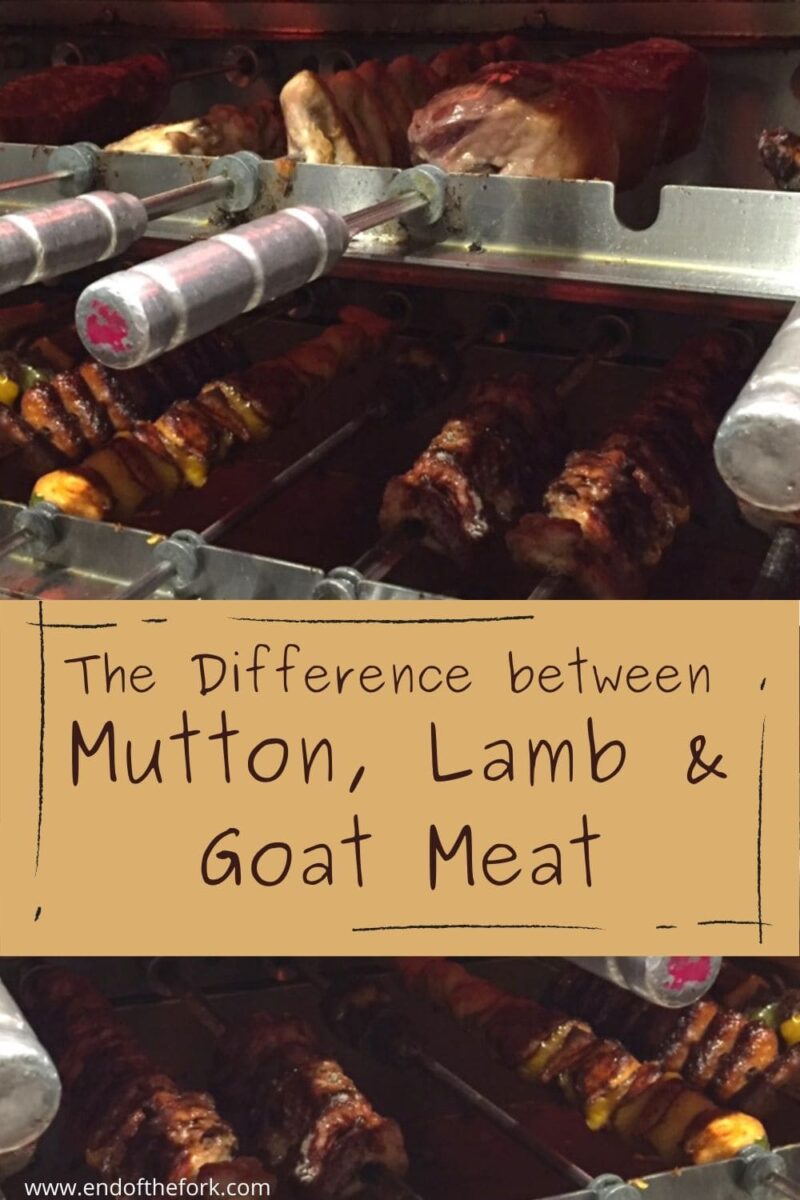
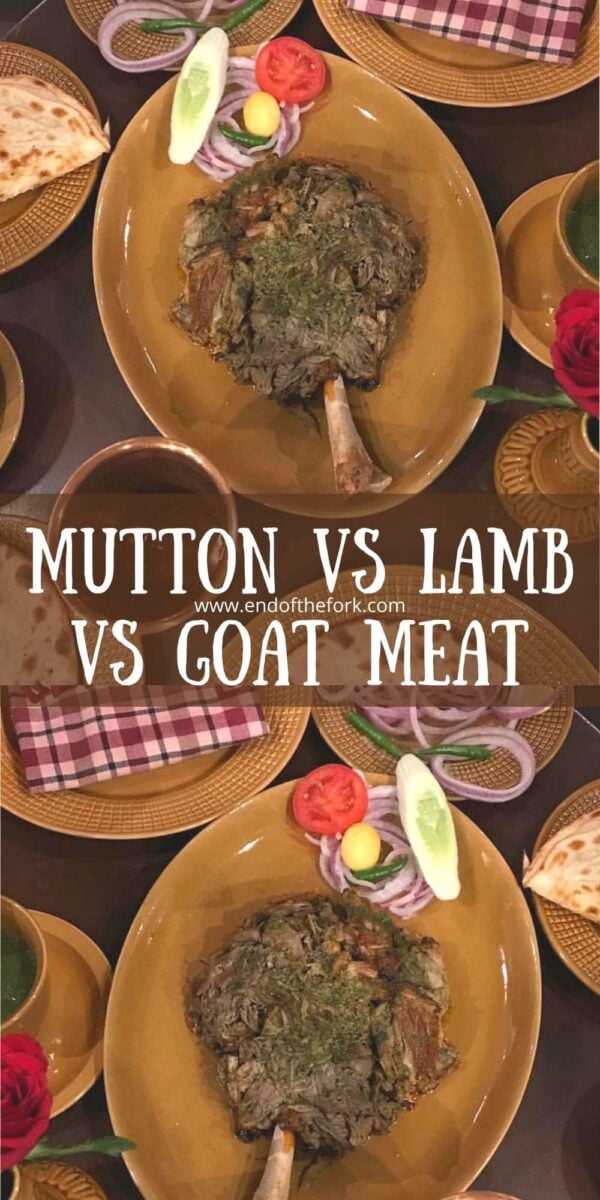
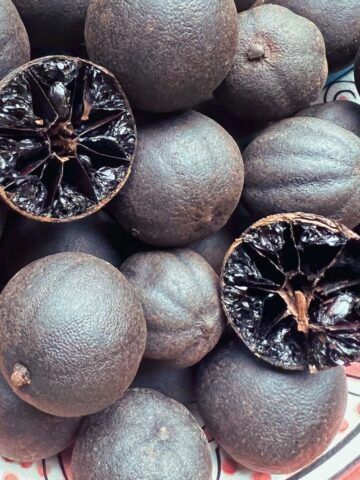
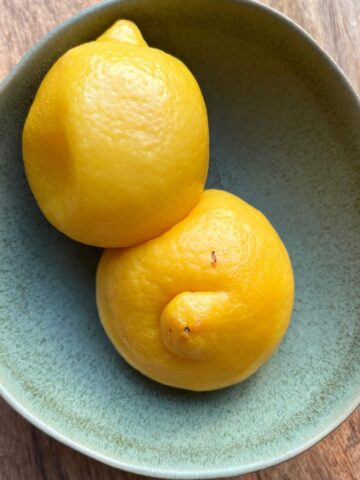

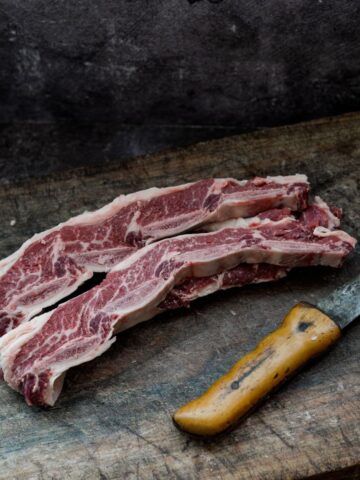
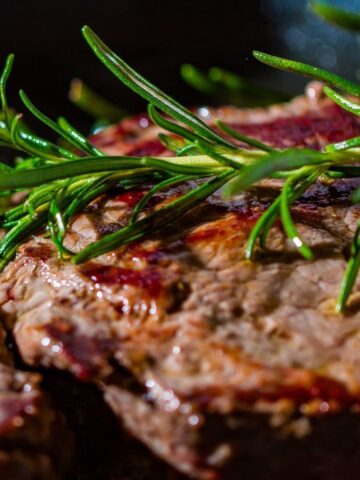
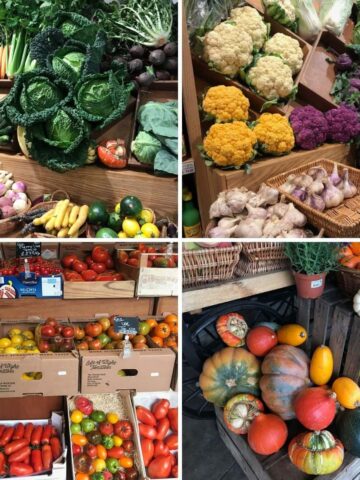
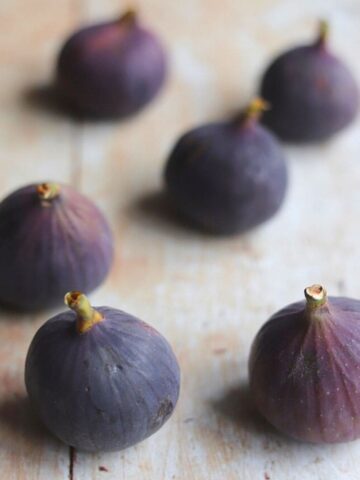
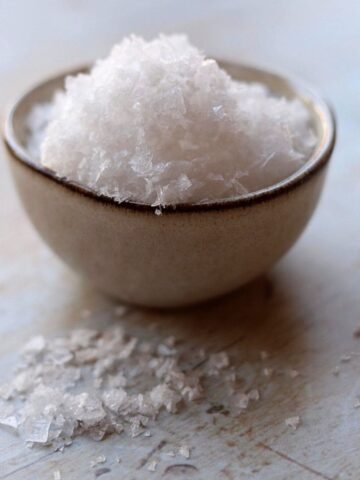
paul gibbs says
Pork is the most consumed meat in the world followed by poultry and beef.
Goat meat is NOT the most popular meat.
F Q says
This is incorrect, it’s actually chicken.
Roxanne says
Thank you for the statistics!
Sherry says
Well I’m in Texas and I love love lamb haven’t really had goat but I like the lamb chops and the leg of lamb as well thanks for the great information.
Nicole Shroff says
Thanks Sherry, you may like some of my lamb recipes.
Nihal Cassim says
Lamb is usually found in colder climates while goat is found in warner climates, as one can tell from their coats. Which is why many folks won’t have access to goat meat. The chaos in warmer climates is that goat meat is called mutton and lamb/sheep meat isn’t differentiated by name.
Perhaps the global food industry should coin standard terms with meats being transported globally due to declining air freights.
saqib says
very informative I first time read the differences between these. Personally I like sheep
Nicole says
Thanks Saqib, and I’m so pleased you found it useful.
Om Krishna Uprety says
I love the chart presented here. I was searching for the health benefits of goat meat.
Nicole says
Thank you, I’m pleased it was helpful.
Guru says
Very nice I’m really like it. I’m eating mutton and I ask butcher for sheep but cousin is telling me
It goat so I’m very confusing. Thank u for ur story very much I like alot
Jagruti says
I am pure vegetarian so don’t know much about non veg products and their values, but I must tell you have created a great informative post for those who are meat eaters. Great info.
Christie Campbell (@AKitchenHoor) says
I have always wondered what the differences were. THANK YOU for sharing this. Now I can confidently order accordingly.
melanie sakowski says
Haha great profile name!
Catherine Brown says
This is really useful information. I live in a rural area where local farms do raise goats and sheep, so all three are generally available. I don’t eat red meat any longer, but I think it is important to be educated about the various options if you are going to consume meat.
eileenbakingsense says
Unfortunately, here in the US (at least in my area) I can only find lamb. No goat meat or mutton is available in the markets. Great information!
Shannon says
Try Latino meat markets for goat, or chivo. You may have to ask for it as it’s probably frozen in back. That’s how I found mine in Central California.. mine came in a 5lb bag of 1&1/2 inch cubes containing bones…perfect for stewing. I’m making biryani. I hope this helps.
Mindy Fewless says
This is great info to have on hand!!
Rae says
Such a great post. Family friends regularly serve goat tacos and they are so delicious I consider for a second getting a couple of goats to raise since it’s not easily found around here. In the US they label all lamb as lamb, so you’re at an advantage with having mutton as a label!
Beth Neels says
This is very interesting! I have never seen goat meat around me. The lamb that we buy around here tends to be fatty. Maybe it’s mis-marked and actually mutton?
Arctic Fox says
if your not sure if the meat is lamb or mutton have a look for the dye marks lamb has long stripes wheras mutton/hoggart, hoggat is roughly 12-24 months of age wheras mutton is older that 2 years of age
Jessy @ The Life Jolie says
Very interesting! I LOVE eating lamb- I grew up eating it braised in wine and as an adult I also love it grilled to a nice medium rare! Yum!
jacquee | i sugar coat it! says
I love goat (especially curried) and lamb, but mutton, which I tried to eat once, just didn’t sit well with me. This is rather informative. Thanks for sharing.